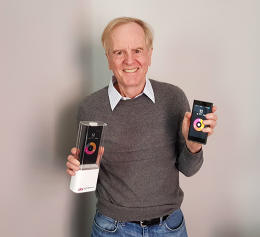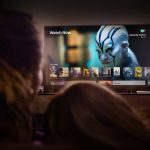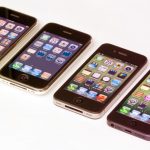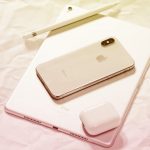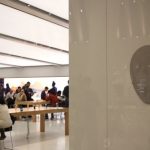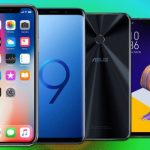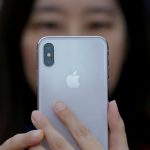With Obi Smartphones, John Sculley Takes Old Lessons From Apple–And Pepsi–To New Places
These cheap phones for emerging markets are designed by an Apple veteran. And they’ll be marketed like a cola.
John Sculley’s new smartphones are not coming to a store near you anytime soon.
That’s by design. The 76-year-old former Apple CEO—who ran the company in the years after Steve Jobs’s ouster in 1985—is cofounder of Obi Worldphone. A large chunk of its strategy for doing well in the remarkably daunting smartphone business involves avoiding the U.S. market altogether.
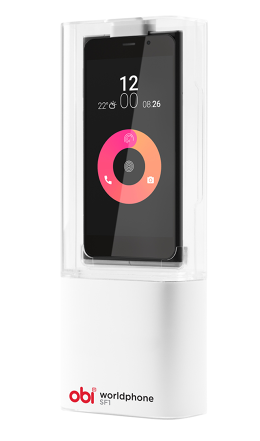
Instead, Obi is launching two Android models aimed at countries where the smartphones that matter most are not high-end flagships such as iPhones and Samsung Galaxy models, but rather budget-priced phones for young, first-time buyers. The $199 SF1 (for “San Francisco”) is an LTE phone with a fiberglass body and metal trim; a raised 5-inch display protected by Gorilla Glass 4; an 8-core Qualcomm Snapdragon 614 chip; Dolby audio; cameras with flash on both the front and back; and a 3000-mAh battery with Qualcomm Quick Charge technology. The $129 SJ1.5 (for “San Jose”) is a 3G phone with a polycarbonate (aka plastic) case; a 5″ display with Gorilla Glass 3; a more basic MediaTek chip; lower-end cameras; and other concessions to economy.
Designwise, both phones look slick and well put-together for their price points. They were crafted by Ammunition Group, the San Francisco consultancy founded by Robert Brunner, who ran Apple’s industrial design group starting during the Sculley era and ending in 1997, when Jonathan Ive succeeded him. (Another cohort from Sculley’s Apple days, Satjiv Chahil, is consulting on Obi’s marketing efforts.)
Despite the involvement of multiple names from Apple’s past, Obi’s phones don’t come off as mundane Cupertino knockoffs. And the company itself sure isn’t an Apple wannabe. “We have huge respect, both Robert Brunner and I do, for Apple, because we learned so much in our years there,” Sculley says. “Apple is a design-led company. We’ve said we want to be a design-led company, in an entirely different market than Apple would ever go into.”
I expected Sculley to mention Apple when we talked; unexpectedly, he spent just as much time talking about lessons he learned at Pepsi, where he served as president from 1977-1983—until Steve Jobs famously asked him, “‘Do you really want to sell sugar water, or do you want to come with me and change the world?”
Today’s smartphone market, Sculley says, has much in common with the soft drink biz. “I’m a consumer marketer,” Sculley told me. “Most people hate commodity markets. How do you differentiate the technology? But if you’re a consumer marketer, you know from experience that there are many ways to differentiate a brand in commodity markets. How much more commodity can you get than sugar water?”
Trimming The Fat

Sculley says that the concept that became Obi was hatched a couple of years ago when he and his partners at Inflexionpoint, a global IT supply-chain company he cofounded, put together a bid to buy ailing phone maker BlackBerry. Even after massive layoffs, it still had 7,000 employees devoted to its smartphone business. BlackBerry decided not to auction itself off after all, so the deal went nowhere. But the experience got Sculley and his associates thinking about the cost structures of the smartphone companies that were struggling.
“As we looked at HTC, and looked at Nokia, and looked at Sony, and others who were hemorrhaging money, we realized they had incredibly high expenses: corporate overhead, legacy R&D expenses, big field organizations,” says Sculley. “We said hey, you don’t build companies like that anymore. You start from scratch. Particularly with the Silicon Valley model.”
With Obi, the idea was to create a smartphone company that could succeed with a head count in the hundreds. And though other companies—such as Xiaomi—sell models at the similarly aggressive price points, Obi aims to offer a better phone for the price. Working with Ammunition’s Brunner on industrial design is part of that goal.
“The hardest part of the design was not coming up with cool-looking designs,” Sculley says. “It was sweating the details over in the Chinese factories, who just were not accustomed to having this quality of finish, all of these little details that make a beautiful design. We had teams over in China, working for months on the floor every day. We intend to continue that process and have budgeted accordingly.”
Obi is also trying to set itself apart from the low-price pack by cutting deals for premium parts. “Instead of going directly to the Chinese factories, we went to the key component vendors, because we know that ecosystem and have the relationships,” Sculley says. “We went to Sony. It’s struggling and losing money on its smartphone business, but they make the best camera modules in the world.”
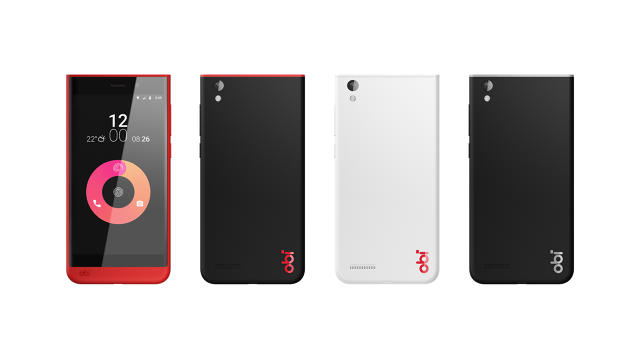
On the software side, Obi had to pick its design battles. “We can only control the user experience to a limited extent, because we’re Android-based,” Sculley says. So the company focused on areas that consumers care most about, such as photography. For instance, it implemented a feature that takes two photos milliseconds apart—with and without flash—and then blends them into one pleasing picture.
Country By Country
To explain why Obi has no plans to sell phones in the U.S., Sculley references his experience helping to found wireless carrier MetroPCS two decades ago. “The experience we had was that the wireless operators just have a stranglehold on distribution in North America,” he says. “Very few people have been able to crack into the U.S. market, where you’ve got dominant brands, well-established here.” With Obi, “our sense was that we ought to go where we know we have a high probability of being successful.”
At first, that will mean concentrating on markets such as East Africa, Nigeria, South Africa, Vietnam, Turkey, and Pakistan. The company also plans to dive into India, but not until it’s confident it’s ready to tackle a market that large.
Unlike typical phones sold in the U.S., Obi’s models are designed for affordable international calls, a fact referenced by the “Worldphone” in the company’s name. Both models have dual SIM slots, allowing users to mix and match service from multiple carriers. “If you go to Dubai, 87% of the people are from the Philippines, Sri Lanka, India, and other places, and they want to be able to communicate routinely with their families at home,” Sculley explains.
Obi’s worldly ambitions are also reflected in the apps it’s chosen to bundle on its phones. Dots provides free text messaging; GigSky lets people buy short-term data plans in 90 countries; Hoot offers Periscope-like livestreaming optimized for slower networks.
Cola Wars Redux
So how is selling smartphones like selling soft drinks? In part, Sculley says, it’s about bringing a product’s marketing into the real world until it becomes omnipresent.
“When Pepsi and Coke are competing around the world, the principal way they market is what we call presence marketing,” he says. “There’s a lot of outdoor boards, there’s a lot of signage on walls, there’s a lot of in-store display signage. Having a logo that works well on signage is key to building a beverage business.”
As Sculley’s new company was formulating its brand, it thought in similar terms. “‘Obi’ was a nice, simple word,” Sculley says.” It worked in every language. It works spectacularly. It’s as good as Coke when you go look at it in-market. “
A year ago, before the phones designed by Ammunition were ready, Obi tested its theories by selling more generic Android phones in the United Arab Emirates. Sculley says that it soon snapped up 5.2% of the market, making it one of the top four manufacturers. “We got real confidence we could run presence marketing,” he says. “We knew how to run a business without the overhead, with a much lighter employment model. You combine those two together, and we can actually be profitable at these very attractive price points.”
The Stateside Situation
Even in the U.S., a nice smartphone that sold for a no-commitment price of $200 would find customers—and would have competition from companies such as Motorola, which are already striving to build inexpensive-but-solid devices. “When people see this, they say, ‘So why aren’t you making it available in the U.S.?,” Sculley says. “Because when you’re a startup company, you stay focused. We’re focused.”
Though Obi has no plans to sell phones in the U.S., Sculley does note that the market is evolving rapidly. “It’s always to the benefit of Apple,” he says, mentioning offers such as Sprint’s “iPhone Forever” plan. “Why? Because Apple is the most admired product.”
Over time, he predicts, “you’re going to see e-commerce eventually be a very credible alternative channel to going through the wireless operators, because the wireless operators have gone à la carte and are unbundling the phone. It’s kind of inevitable that the U.S. is going to adapt to the way other countries do business around the world.”
And maybe someday Obi’s business model and the U.S. market could be a better fit for each other. “We’ve got some remarkable things on the roadmap,” Sculley says. “This is just the beginning.”
Fast Company , Read Full Story
(142)

